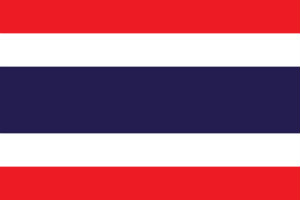Thailand: Setting Ambitious Renewable Energy and Wind Targets
 In 2008, the Thailand Ministry of Energy published the Renewable Energy Development Plan, 2008–2022 (REDP). The REDP set a target to meet 20% of final energy demand with renewable energy by 2020. Targets leading up to 2020 were also set, with 15.6% by 2011 and 19.1% by 2016. In 2011, the plan was updated with more aggressive intermediate targets and became the Alternative Energy Development Program, 2012–2021 (AEDP). The AEDP set a total target of 5,608 megawatts (MW) of renewable electricity generation by 2021, or 19.3% of installed capacity. The AEDP also sets technology specific targets for 2021, including 800 MW of wind, and 500 MW of solar power, with the greatest share of renewable energy coming from biomass. The instruments intended to meet the targets include production mandates, tax incentives, R&D support, and public awareness programs. Thailand also implemented a feed-in tariff known as the “Adder Program.” The program allows participants to sell renewable electricity at a specific tariff level, depending on the technology, with the rates for wind and solar guaranteed for 10 years. Thailand’s experience is an example of a multi-faceted policy package enabling wind and renewable energy development (Asian Development Bank 2013).
In 2008, the Thailand Ministry of Energy published the Renewable Energy Development Plan, 2008–2022 (REDP). The REDP set a target to meet 20% of final energy demand with renewable energy by 2020. Targets leading up to 2020 were also set, with 15.6% by 2011 and 19.1% by 2016. In 2011, the plan was updated with more aggressive intermediate targets and became the Alternative Energy Development Program, 2012–2021 (AEDP). The AEDP set a total target of 5,608 megawatts (MW) of renewable electricity generation by 2021, or 19.3% of installed capacity. The AEDP also sets technology specific targets for 2021, including 800 MW of wind, and 500 MW of solar power, with the greatest share of renewable energy coming from biomass. The instruments intended to meet the targets include production mandates, tax incentives, R&D support, and public awareness programs. Thailand also implemented a feed-in tariff known as the “Adder Program.” The program allows participants to sell renewable electricity at a specific tariff level, depending on the technology, with the rates for wind and solar guaranteed for 10 years. Thailand’s experience is an example of a multi-faceted policy package enabling wind and renewable energy development (Asian Development Bank 2013).
